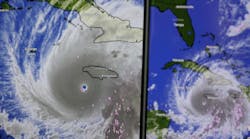Storm Water Survey Shows Funding Gap
The Water Environment Federation's (WEF) Stormwater Institute released the results of a survey entitled the National Municipal Separate Storm Sewer System (MS4) Needs Assessment Survey.
The first analysis storm water needs survey shows an estimated $7.5 billion annual funding gap and also has revealed priorities and challenges across the U.S.
According to WEF, it “reflects an effort to learn more about the nature and needs of the MS4 sector at a scale that has never been attempted.”
The survey generated multiple findings, including: Phase I and II permittees ranked regulatory compliance, flooding, and water quality and habitat restoration issues as important program drivers. And, according to WEF, significant challenges identified include lack of funding, aging infrastructure and regulations.
The survey also found the need for information and technical resources is related to funding and financing; and one unexpected finding is the lack of priority by respondents regarding climate change.
“An important first step in a maturing infrastructure sector is to better understand the fundamental challenges and needs,” said Eileen O’Neill, WEF executive director, according to WEF. “This survey and analysis represent this first major step in the storm water sector, which is a field that is notoriously data-poor. By collecting data on the MS4 sector, this effort identifies the priorities that need to be addressed in the near term while allowing for planning for coverage of other areas in a long-term strategic fashion.”
622 responses from 48 states and the District of Columbia were collected for the survey. Phase I and II MS4 permittees represent around 25% and 65% of respondents. 7% and 3% of respondents are non-traditional Phase II permittees and state transportation departments.
According to WEF, “storm water is the only growing source of water pollution in waterways across the country.” There now is a pressure on storm water systems and water infrastructure with urban populations expected to grow to about 70% by 2050, and more frequent storms occurring across the U.S.
More information on the survey here.


